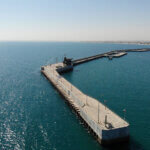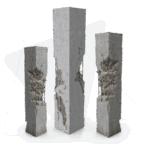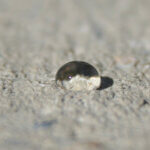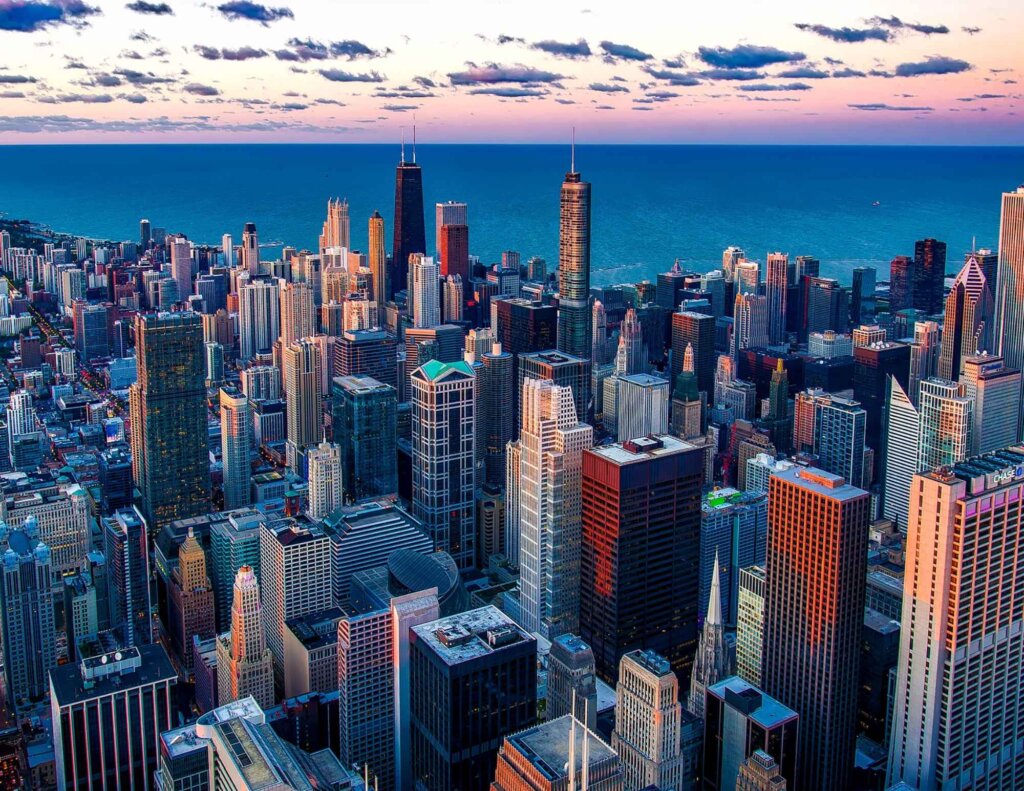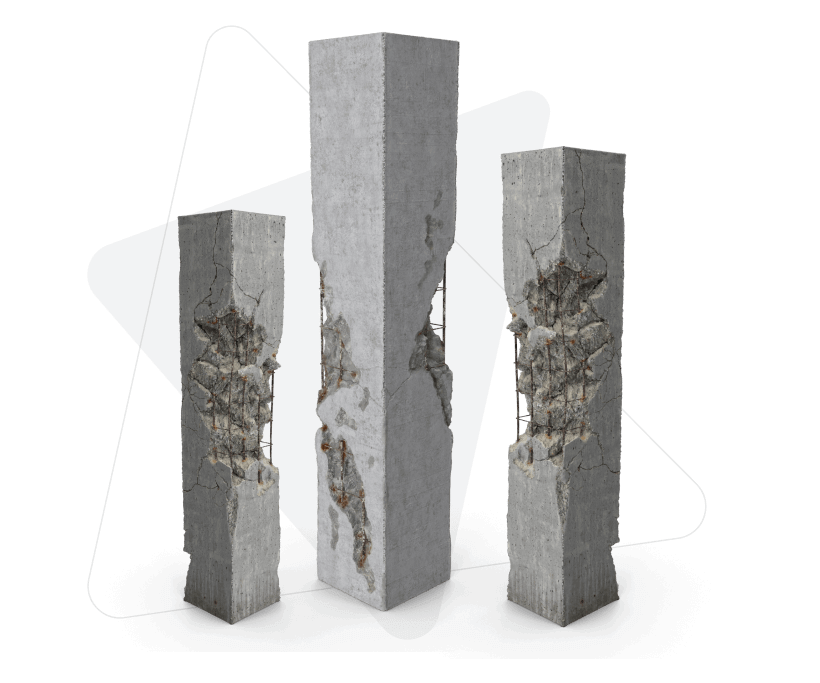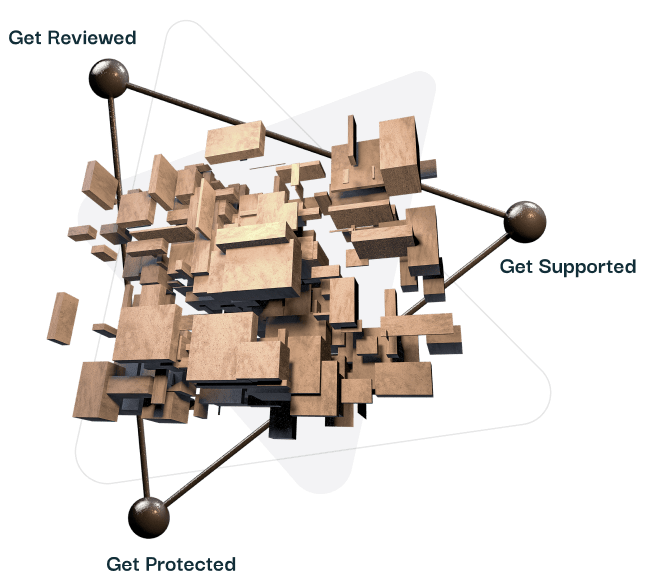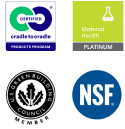Conventional reinforced concrete simply doesn’t offer the reliability or the longevity that many companies expect in today’s commercial construction market.
No matter how durably built the structure may be, the highly porous nature of concrete means that the internal rebar is always at risk of moisture intrusion and other corrosive elements. If left unchecked, the resulting damage can range from surface-level aesthetics (e.g., minor cracks and spalling) to a complete compromise of structural integrity in extreme cases.
To mitigate that risk, concrete steel reinforcement elements are often treated with unique coatings designed to seal and protect the metal from rust and corrosion, thus extending the overall life of the structure. Below, we compare some of the most common rebar coating options to see how they stack up against our advanced hydrophobic admixtures.
Comparing Steel Rebar Coating Options:
Hot Dip Galvanizing (HDG) – The Advantage of Zinc-Coated Rebar
Hot dip galvanizing is a common coating process for steel reinforcement that creates a protective zinc layer on the surface of the metal. To apply the coating, the rebar is immersed in a molten zinc bath at temperatures around 840°F, which produces iron-zinc alloy layers across the entire surface. These layers act as a physical barrier that prevents the ingress of moisture and corrosive elements. A major advantage is the cohesive durability of the coating: the zinc is chemically bonded to the steel, so the risk of under-film corrosion is minimized.
However, the downside of hot dip galvanizing is that certain chemical reactions occur when the zinc layer comes into contact with many common types of concrete mixtures. When that happens, the protective barrier is potentially compromised right from the start. Furthermore, unlike comprehensive Hycrete protection, galvanizing only protects the surface of the rebar elements – not the overall concrete structure itself.
Fusion Bonded Epoxy (FBE) – The Advantage of Epoxy-Coated Rebar
Epoxy is a commonly used surface protectant for steel rebar applied through the fusion bonding process. The steel components are stripped, blasted, and heated to temperatures typically ranging between 430°F and 480°F, then sprayed with ionically charged epoxy powder particles, which electrostatically adhere to the surface.
The result is a strong, consistent epoxy coating offering extended protection from the elements. However, the level of protection is highly dependent on the application process – any small error in processing, coating consistency, or damage due to handling/installation can severely compromise the rebar’s resistance to corrosion. In fact, due to accelerated chemical reactions, damaged epoxy coatings can actually increase the rate of corrosion. Moreover, fusion-bonded epoxy rebar coatings tend to break down in periods as short as 10 or 20 years, so they lack the long-term protection and resilience of Hycrete admixtures.
Chemically-Reactive Enamel (CRE) Coatings for Rebar
Special chemically reactive enamel coatings are an increasingly common strategy for protecting concrete reinforcement elements from rust, weathering, and corrosion. While there are many common decorative enamel coatings seen throughout commercial construction and architecture, these are more advanced, chemically-bonded coatings that function as a protective treatment for steel rebar.
CRE enamel coatings are either sprayed on as a slurry or electrostatically adhered to the rebar. The treated components are then baked at temperatures that can exceed 1,500°F to create a strong, consistent bond across the entire surface of the metal. However, aside from being a relatively new concrete protection strategy without long-term proven results, chemically reactive enamel coatings are also fairly brittle. The coatings are prone to surface damage during shipment, handling, and processing, which opens up the door for more widespread corrosion to take root.
Hycrete: A More Comprehensive Protection Strategy for Reinforced Concrete
Hycrete’s protection extends from the surface of your concrete all the way down to the structural steel elements. Not only is Hycrete the most waterproof concrete technology available, it also directly prevents corrosion of steel reinforcement. Our admixtures are chemically engineered to create what we call a “liquid green bar” on the internal rebar. The result is total, long-lasting corrosion protection from a molecular barrier which forms around all internal steel elements.
Unlike fusion-bonded epoxy and chemically reactive enamel options, Hycrete does not wear away or degrade in performance over time. A case in point: our Seattle Bullitt Center project recently celebrated its 10-year anniversary and is continuing to perform at an even higher level of efficiency than expected. On course to hit its design goal of a 250-year lifespan, the Bullitt Center has been aptly dubbed “the Greenest Commercial Building in the World” with the help of Hycrete.
Hycrete’s advanced protective coating can work in conjunction with the steel treatments discussed above, providing the ultimate level of corrosion prevention. However, the level of protection that Hycrete provides generally makes these relatively expensive rebar treatments unnecessary: Hycrete alone offers the same level of protection or greater, along with reduced risk and a proven longer structural lifespan.
Complete Waterproofing and Protection for Steel-Reinforced Concrete
Hycrete is an innovative American manufacturer founded in 2003. Our company’s mission is to help the construction industry build better, more sustainable structures through the engineering of better concrete materials. Backed by more than two decades of experience and thousands of successful projects worldwide, Hycrete has become the scientifically proven gold standard for concrete waterproofing and corrosion protection.


